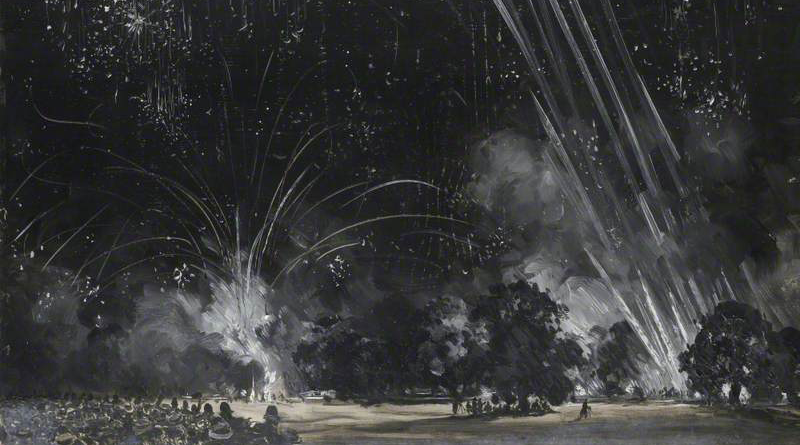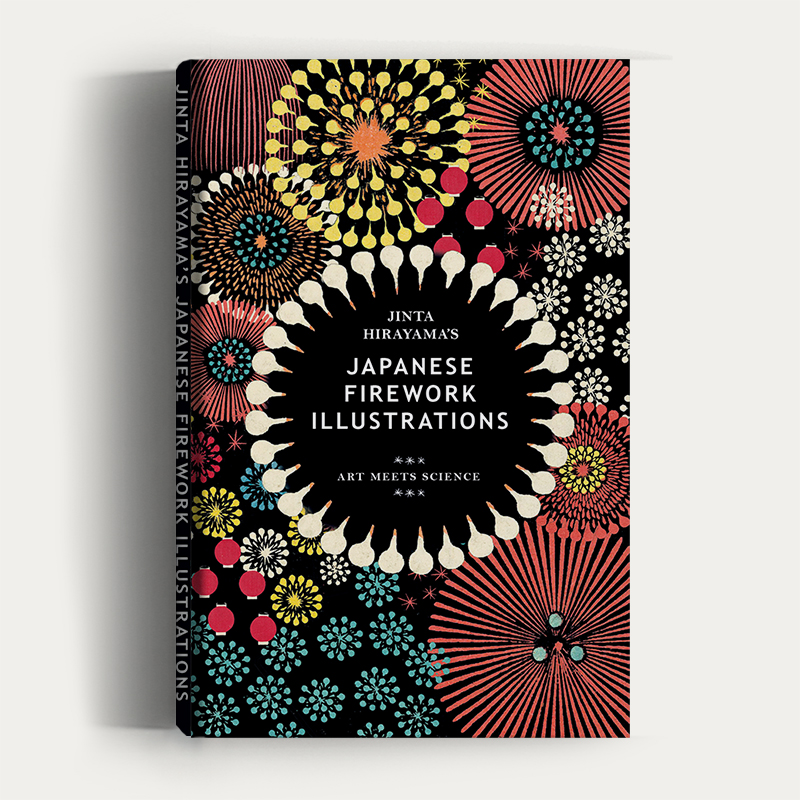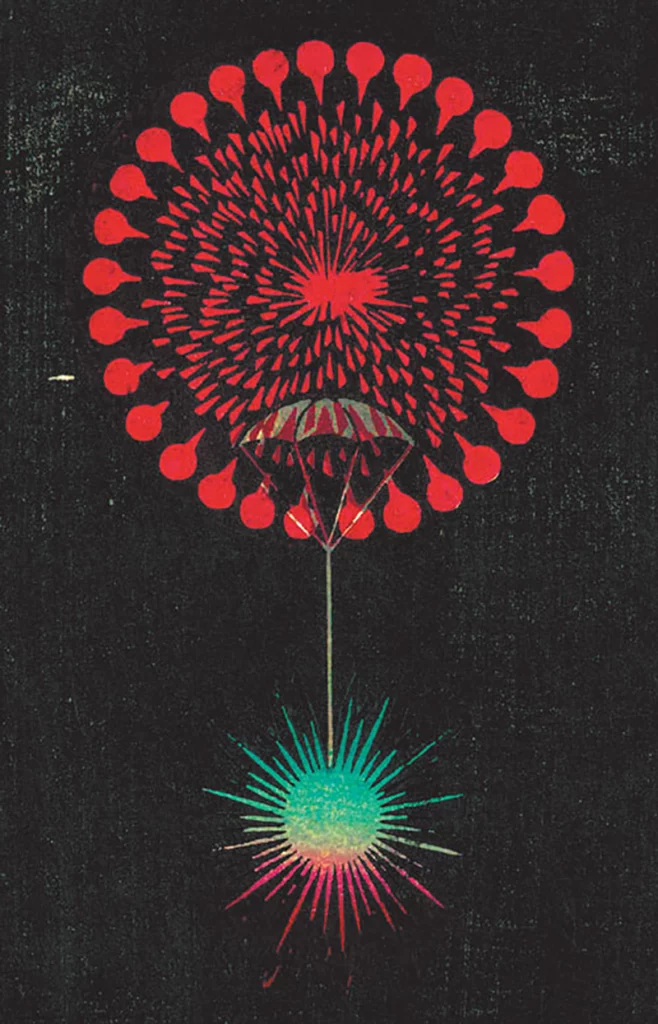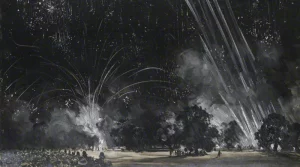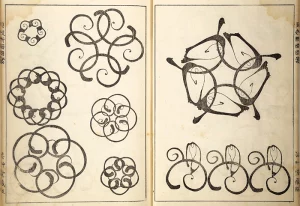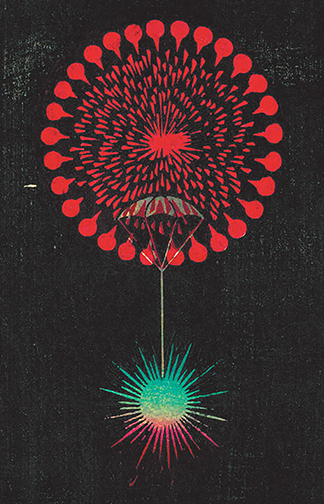THE ORIGINS AND ALCHEMY OF FIREWORKS
Once described as the only art capable of competing with nature, the art of fireworks has inspired awe and wonder for centuries. From the history of pyrotechnics in ancient China and Japan to today’s choreographed fireworks displays, this unique union of chemistry and artistry has evolved into a craft that bridges science and imagination.
Emerging from early experiments with saltpetre, gunpowder, and bamboo, the practice of pyrotechny developed alongside advances in modern chemistry, giving rise to more sophisticated displays—each a meticulously crafted explosion of flame, colour, and sound.
“Pyrotechny paints on the canvas of the sky.”
— Alan St. Hill Brock, 1918

Originally published as a catalogue in the late-nineteenth century, this edition celebrates the craftsmanship, precision, and visual splendour of the Hirayama Fireworks Company’s early print designs.
In a unique fusion of art and pyrotechnic innovation, discover the history of Japanese fireworks in this collection of woodblock illustrations by Jinta Hirayama.
tHE CHEMICAL ART OF PYROTECHNY
In historical pyrotechnics, alchemists experimented with natural ingredients and mineral powders such as indigo, saffron, and elder—and even more obscure substances like ink and onion juice—to alter the hue of gunpowder explosions, with varying success. The Italian alchemist Cosimo Ruggeri (d. 1615) is often credited as one of the first to employ metals and their salts to achieve distinct colours, marking a decisive moment in the chemical art of fireworks. His pursuit of “colour to rival nature” became both a scientific and artistic ideal—an early example of fireworks chemistry creating art through light.
The scientific art of fireworks lies in the precise manipulation of chemical reactions to produce ephemeral, breathtaking displays—fleeting yet unforgettable. Each colour burst results from the combustion of specific metal salts: strontium for red, copper for blue, barium for green.
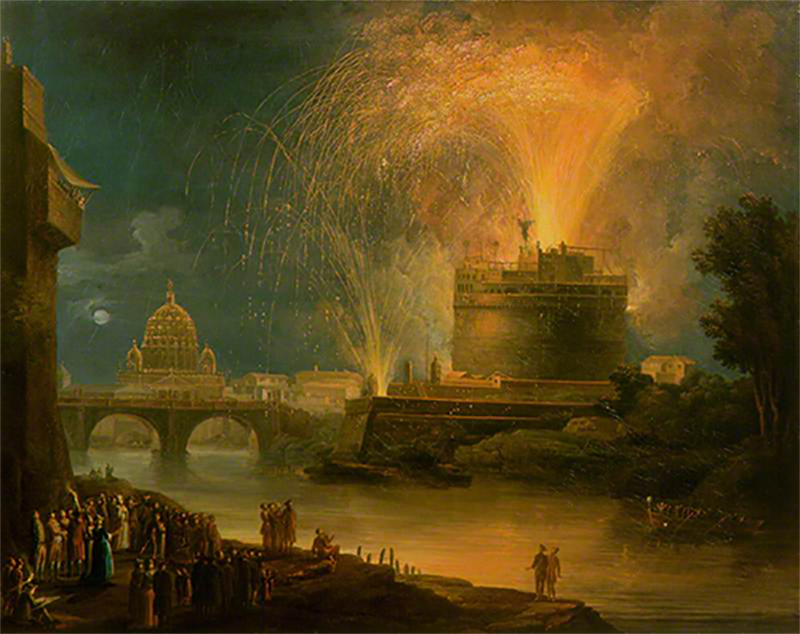
fIREWORKS IN ART AND PAINTING
In these transient illuminations, artists of the eighteenth and nineteenth centuries found a subject uniquely suited to their own explorations of light, atmosphere, and impermanence. Their paintings and prints form a visual record of this evolving art, capturing not only the spectacle itself but also the technological ingenuity and cultural fascination that surrounded it. The connection between fireworks and fine art reveals how chemistry becomes art, and how both disciplines seek to master colour, motion, and emotion.
. . . be bright and busy
While hoaxed astronomers look up and stare
From tall observatories, dumb and dizzy,
To see a Squib in Cassiopeia’s Chair!
A Serpent wriggling into Charles’s Wain!
A Roman Candle lighting the Great Bear!
A Rocket tangled in Diana’s train,
And Crackers stuck in Berenice’s Hair!
—’Ode to Madame Hengler’,
Firework-maker to Vauxhall,
Thomas Hood, 1830
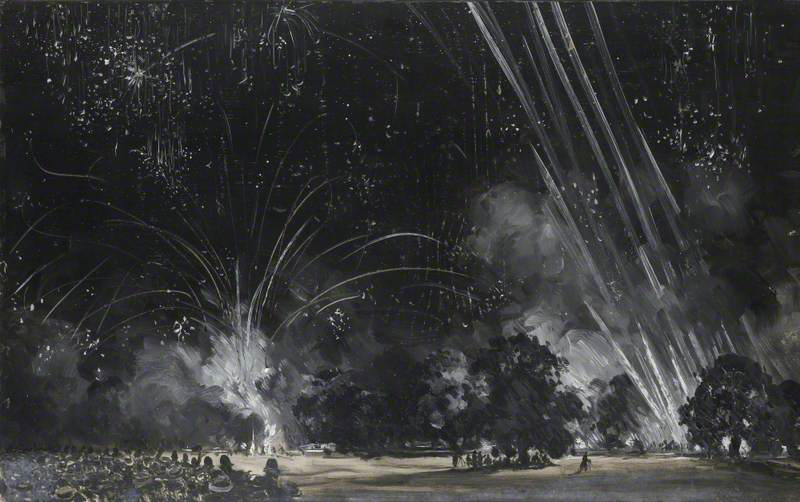
In the same way that the pyrotechnician layers chemical compounds to produce highly crafted displays of colour and form, artists have employed their own materials and techniques to translate these momentary spectacles into enduring works of art. Both the art of fireworks and the chemistry behind them demand experimentation, precision, and a deep understanding of light.
At this meeting point, science and art converge in a luminous union of art and science. Here, fireworks emerge not merely as entertainment but as a profound testament to humanity’s enduring desire to transform matter into moments of beauty.
read more on the art meets science journal
discover the art meets science collection
-
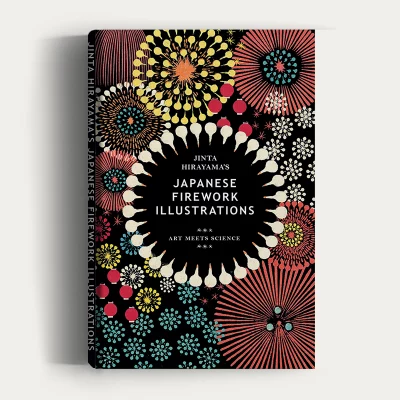 Art/Chemistry/Illustration/Japanese Woodblock/Pyrotechnics/ScienceSelect options This product has multiple variants. The options may be chosen on the product page
Art/Chemistry/Illustration/Japanese Woodblock/Pyrotechnics/ScienceSelect options This product has multiple variants. The options may be chosen on the product pageJinta Hirayama’s Japanese Firework Illustrations
£17.99 – £24.99Price range: £17.99 through £24.99 -
 Nature/Botany/Illustration/Mushrooms/MycologySelect options This product has multiple variants. The options may be chosen on the product page
Nature/Botany/Illustration/Mushrooms/MycologySelect options This product has multiple variants. The options may be chosen on the product pageAnna Maria Hussey’s Mushroom Illustrations
£7.99 – £29.99Price range: £7.99 through £29.99 -
 Art/Color TheorySelect options This product has multiple variants. The options may be chosen on the product page
Art/Color TheorySelect options This product has multiple variants. The options may be chosen on the product pageMunsell’s Colour System
£7.99 – £25.99Price range: £7.99 through £25.99 -
 Art/Astronomy/ScienceSelect options This product has multiple variants. The options may be chosen on the product page
Art/Astronomy/ScienceSelect options This product has multiple variants. The options may be chosen on the product pageUrania’s Star Charts
£24.99 – £29.99Price range: £24.99 through £29.99 -
 Art/Color TheorySelect options This product has multiple variants. The options may be chosen on the product page
Art/Color TheorySelect options This product has multiple variants. The options may be chosen on the product pageEmily Vanderpoel’s Color Problems
£7.99 – £34.99Price range: £7.99 through £34.99 -
 Animals/Butterflies & Moths/NatureSelect options This product has multiple variants. The options may be chosen on the product page
Animals/Butterflies & Moths/NatureSelect options This product has multiple variants. The options may be chosen on the product pageMaria Sibylla Merian’s Metamorphosis
£9.99 – £34.99Price range: £9.99 through £34.99

